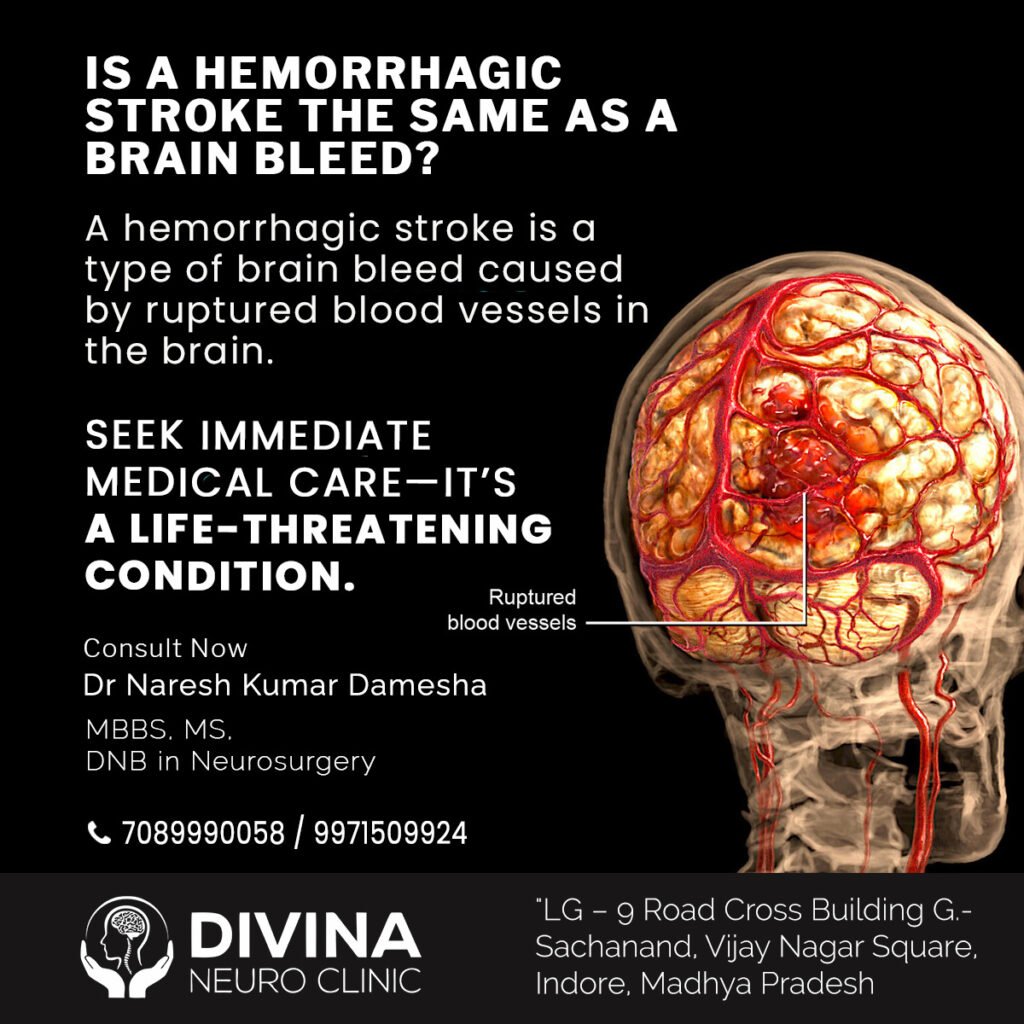Is a Hemorrhagic Stroke the Same as a Brain Bleed?
Is a hemorrhagic stroke the same as a brain bleed, yes this terms are related to each other hemorrhagic stroke and brain bleed.
While both deal with bleeding in the brain, the term “brain bleed” is more general and may involve different causes of bleeding, while a hemorrhagic stroke involves a type of stroke because of this bleeding.
Understanding the difference should help patients and their families better understand the condition and implications of the same.
What is a Hemorrhagic Stroke?
The most obvious case of a hemorrhagic stroke is when there is actual rupture, thereby haemorrhage and direct leakage, into or around the cerebrum.
Such a bleed around the brain disrupts normal blood flow and places pressure on the cells of the brain, thereby damaging them.
These are most frequently due to high blood pressure, trauma, or aneurysms-relaxed walls of blood vessels-and malformations-arterial and venous tangles. With any given occurrence, it sets off the real thing: a sudden, often violent onslaught from one moment to another.

How is a Brain Bleed Different?
It can also be referred to more generically as a term: an intracranial haemorrhage or a bleed into the brain. These most often occur due to trauma, infection tumours, and disorders, such as clotting disorders of the blood.
Brain bleeds may be intracerebral, subdural, or epidural hematomas, between the brain and the skull, or even in the subarachnoid haemorrhage space surrounding the outer tissue of the brain.
Though all hemorrhagic strokes fall under the category of a brain bleed, not all bleeds are considered hemorrhagic strokes.
Symptoms and Overlap
Both conditions display similar symptoms, which include headache, sudden severe headache or weakness on one side of the body, difficulty speaking, trouble with vision, or loss of consciousness. However, symptom severity and disease course certainly depend on the cause, location, as well as the extent of bleeding.
Diagnosis and Treatment
Imaging studies scans or MRIs deal with the exact site and cause of the bleeding. Diagnosis is usually by imaging studies. Treatment for hemorrhagic stroke is aimed at controlling bleeding, reducing swelling of the brain, and preventing further complications.
This may involve surgery to repair damaged blood vessels or relieve pressure on the brain. Other varieties of intracranial haemorrhage have different treatments, depending on their cause and severity.
Importance of Early Intervention
Both hemorrhagic strokes and brain bleeds are medical emergencies. The earlier the action taken, the better the outcomes may be, with a possible reduction in the risk of long-lasting damage. Lives have been saved by quick recognition and immediate seeking of medical care.
Dr. Naresh Kumar Damesha
Consulting Neurosurgeon

Leave a Reply